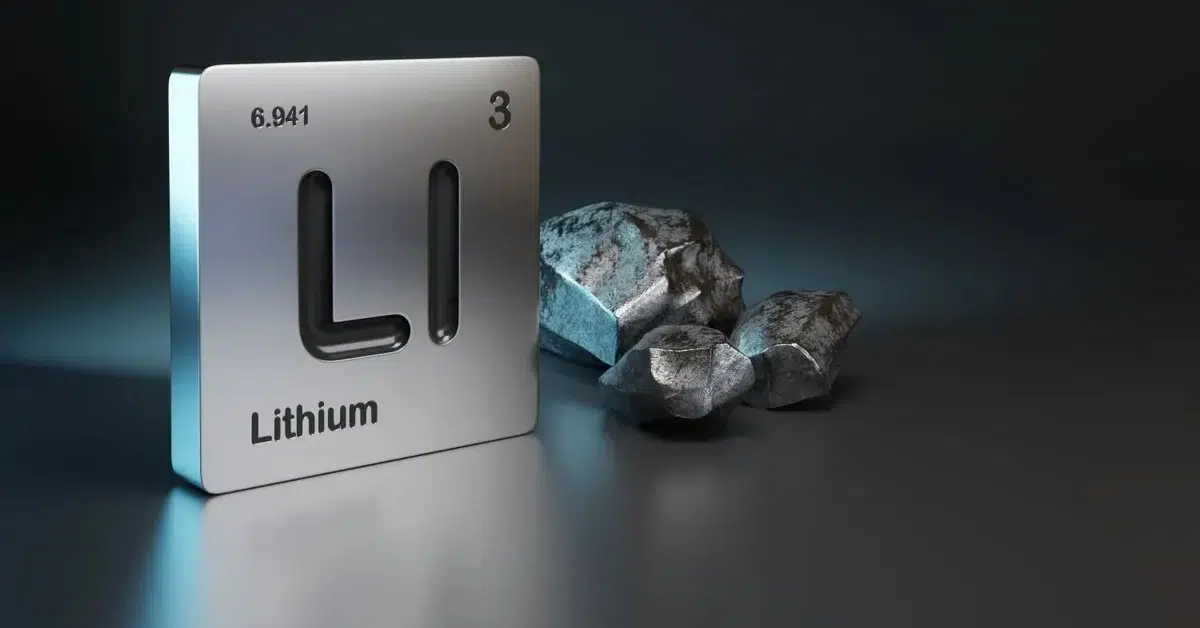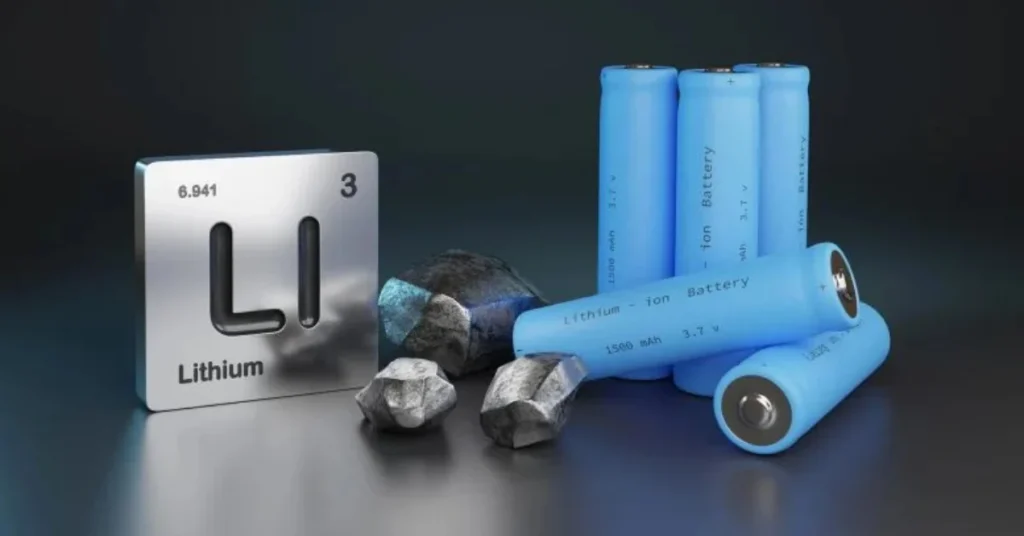Our Location
304 North Cardinal St.
Dorchester Center, MA 02124

Lithium, often dubbed the “white gold,” has emerged as a cornerstone in the global transition towards clean energy. Its pivotal role in powering electric vehicles (EVs), renewable energy storage systems, and various electronic devices has catapulted its demand to unprecedented levels.
As nations vie for control over this critical resource, India’s position in the global lithium race is becoming increasingly significant.
Here’s a country-wise breakdown of the Global Li+3 Landscape in 2025, presented in a table format with data on reserves, production, major projects, and key developments:
| Country | 2025 Estimated Reserves (Tonnes, LCE) | 2025 Production (Tonnes, LCE) | Major Projects | Key Developments |
|---|---|---|---|---|
| Australia | 6.3 million | ~350,000 | Greenbushes, Pilgangoora, Mt Marion | World’s largest producer, expanding capacity, focus on hard rock lithium |
| Chile | 9.6 million | ~200,000 | Salar de Atacama | Major brine-based producer, state involvement increasing |
| China | 2 million | ~150,000 | Yichun, Qinghai Lake | Leads in refining (~65% globally); mining expanding despite price drops |
| Argentina | 20 million | ~165,000 | Sal de Oro (POSCO), Cauchari-Olaroz | Massive brine reserves, fastest-growing producer in 2025 |
| Bolivia | 21 million | <10,000 (pilot stage) | Uyuni, Coipasa, Pastos Grandes | Largest known reserves; minimal commercial production due to tech and political delays |
| Brazil | 1.3 million | ~8,800 | Grota do Cirilo (Sigma Lithium) | Production up 86.2% YoY; targeting exports to North America and Europe |
| United States | 1 million | ~20,000 | Silver Peak (Nevada), Thacker Pass | Strategic push to increase domestic production; permitting remains slow |
| Canada | 930,000 | ~12,000 | Snow Lake, Whabouchi, James Bay | High investment in spodumene mining; Snow Lake to start production in 2025 |
| Zimbabwe | 500,000 | ~3,000 | Bikita, Arcadia | World’s largest known deposit in Bikita (~11 Mt ore); Chinese investment accelerating project timelines |
| Portugal | 250,000 | <2,000 | Barroso Lithium Project | Europe’s largest reserve; awaiting regulatory clearance for expansion |
| Mali | 120,000 | Starting in 2025 | Goulamina (Ganfeng Lithium) | Africa’s rising lithium producer; export-ready by late 2025 |
| India | 5.9 million (inferred, J&K) | 0 (no commercial output yet) | Reasi (J&K), Korba (Chhattisgarh) | Significant 2023 discovery; mining licenses being issued, with potential production by 2027 |
Note: Production values are approximate and based on estimates for 2025; LCE = Li Carbonate Equivalent.

As of 2022, the global Li resources are estimated at 98 million tonnes, with Argentina, Bolivia, and Chile—collectively known as the “Li Triangle”—accounting for approximately 53.1% of these reserves. Australia stands as the largest producer of Li, followed by Chile, China, and Argentina. China, while not a leading producer, plays a dominant role in the global lithium-ion battery manufacturing sector, processing over 65% of the world’s Li.
Lithium’s strategic importance is underscored by its essential role in the production of li-ion batteries, which are integral to EVs and renewable energy storage solutions. The global push towards net-zero emissions and the electrification of transportation systems has intensified the competition for lithium resources. Countries with secure access to Li are poised to lead in the green energy transition, making Li a critical geopolitical asset.
As of 2025, India has made significant strides in identifying Li reserves, a critical component for electric vehicle (EV) batteries and renewable energy storage. While exploration is ongoing, the Geological Survey of India (GSI) has reported inferred Li resources in several states. It’s important to note that these are inferred resources, not yet classified as proven reserves, and commercial extraction has not commenced in most areas.
| State | Estimated Li Resources (in tonnes) | Status of Exploration & Notes |
|---|---|---|
| Jammu & Kashmir | 5.9 million | Discovery in Reasi district; auction attempts in 2023 and 2024 failed due to lack of bidders. |
| Karnataka | 10,000 | Preliminary exploration; no commercial production yet. |
| Rajasthan | 6,500 | Preliminary exploration; no commercial production yet. |
| Jharkhand | 4,000 | Preliminary exploration; no commercial production yet. |
| Andhra Pradesh | 2,500 | Preliminary exploration; no commercial production yet. |
| Chhattisgarh | Not specified | Ongoing exploration; no commercial production yet. |
| Gujarat | Not specified | Ongoing exploration; no commercial production yet. |
| Madhya Pradesh | Not specified | Ongoing exploration; no commercial production yet. |
| Odisha | Not specified | Ongoing exploration; no commercial production yet. |
| Uttarakhand | Not specified | Ongoing exploration; no commercial production yet. |
| Himachal Pradesh | Not specified | Ongoing exploration; no commercial production yet. |
| Arunachal Pradesh | Not specified | Ongoing exploration; no commercial production yet. |
India’s push for Li exploration aligns with its broader goals of achieving net-zero emissions by 2070 and enhancing the adoption of electric vehicles. However, significant challenges remain in translating inferred resources into commercially viable reserves.
In February 2023, the Geological Survey of India (GSI) announced the discovery of 5.9 million tonnes of lithium-inferred resources in the Salal-Haimana area of Reasi district, Jammu and Kashmir. This discovery positioned India as the seventh-largest holder of lithium resources globally. Subsequent explorations have identified additional Li reserves in states such as Chhattisgarh, Jharkhand, Karnataka, and Rajasthan.
India’s lithium extraction efforts in 2025 face several significant challenges, ranging from technical and environmental concerns to geopolitical and economic factors. Here’s an overview:
India has undertaken several strategic initiatives in 2025 to bolster its lithium extraction and processing capabilities, aiming to support its green energy transition and reduce dependence on foreign sources. Here’s an overview of the key measures:
In the Union Budget 2025-26, the Indian government announced full exemptions on Basic Customs Duty (BCD) for critical materials essential for battery manufacturing. This includes lithium-ion battery scrap, cobalt powder, lead, zinc, and 12 other critical minerals. Additionally, 35 capital goods for electric vehicle (EV) battery production and 28 for mobile phone battery manufacturing have been made duty-free. These measures aim to reduce costs for industries reliant on these materials, such as EVs, clean energy, and electronics manufacturing, thereby boosting local battery production and reducing import.
To avoid dependence on China for lithium processing, India is seeking technical assistance from several countries. Discussions are ongoing with Australia, the United States, Bolivia, Britain, Japan, and South Korea. Additionally, executives from Russia’s TENEX, part of state-owned nuclear energy company Rosatom, have approached the Indian government, offering lithium processing technology and potential collaboration opportunities.
India is strengthening ties with resource-rich Latin American countries, particularly those within the “lithium triangle”—Argentina, Bolivia, and Chile. A historic agreement has been signed with Argentina to explore five lithium blocks. Indian companies, including Khanij Bidesh India Ltd (KABIL), Coal India, and Greenko, are investigating lithium reserves in Catamarca province. These collaborations aim to secure a stable lithium supply for India’s growing energy and mobility sectors.
The Indian government is promoting a “waste-to-wealth” approach by encouraging the recycling of critical minerals. The customs duty exemption on lithium-ion battery scrap is expected to boost the domestic recycling industry, which is more cost-effective and environmentally sustainable compared to virgin mining. Recycling consumes fewer resources and takes less time, translating to lower environmental impact.
India is investing in establishing domestic lithium processing facilities to reduce reliance on foreign processing. The National Manufacturing Mission is a pivotal step in bolstering the nation’s energy and manufacturing sectors. Additionally, the government is exploring opportunities for setting up lithium refineries with international collaborations, aiming to develop indigenous processing capabilities.
These strategic initiatives reflect India’s commitment to securing its position in the global lithium supply chain, ensuring a sustainable and self-reliant green energy future.

India’s Li discovery in Jammu & Kashmir marks a significant step towards reducing dependence on imports and enhancing self-reliance in critical minerals. However, translating inferred resources into commercially viable reserves will require substantial investment in exploration, infrastructure, and technology.
India’s discovery of substantial Li reserves marks a significant milestone in its journey towards energy self-sufficiency and green energy transition. However, realizing the potential of these resources requires overcoming technological, environmental, and logistical challenges.
Through strategic domestic policies and international collaborations, India aims to position itself as a key player in the global lithium race, contributing to the advancement of sustainable energy solutions.
The global lithium boom refers to the rapid increase in demand for lithium due to its crucial role in rechargeable batteries, especially for electric vehicles (EVs), renewable energy storage, and consumer electronics.
Lithium is critical for India’s energy transition, as it is essential for EV batteries, solar energy storage, and reducing dependency on fossil fuels. It also aligns with India’s climate goals and “Make in India” initiative.
In 2023, India discovered approximately 5.9 million tonnes of inferred lithium reserves in Jammu & Kashmir, which could significantly boost its domestic supply if proven viable for extraction.
While India is not currently a top lithium producer, with investment in mining, refining, and battery production infrastructure, it can emerge as a strong regional player—though competing globally requires overcoming significant challenges.
India is acquiring lithium assets abroad (e.g., in Argentina and Australia), promoting domestic mining, and forming public-private partnerships to build a lithium value chain.
India faces challenges such as limited current production, lack of refining technology, environmental concerns, bureaucratic hurdles, and the need for skilled labor and investment in research.
India’s goal to have 30% EV adoption by 2030 and expand renewable energy capacity relies heavily on lithium-based energy storage systems, making lithium central to policy and infrastructure planning.
Yes, through initiatives like the Production Linked Incentive (PLI) scheme, India is encouraging domestic battery manufacturing and establishing Gigafactories to reduce reliance on imports.
Yes, lithium extraction and processing can harm ecosystems and water sources. India must adopt sustainable mining practices and strict regulations to balance growth with environmental protection.
While complete dominance by 2025 is unlikely due to infrastructure and supply chain limitations, India can position itself as a significant emerging player with the right policies, partnerships, and investments.

Welcome! I am a dedicated entrepreneur running an industrial affiliate product website, helping businesses and professionals find the best tools, equipment, and resources for their needs. With a passion for industrial products and a keen eye for quality, I curate and recommend top-performing items that enhance efficiency and reliability.
Through my platform, I aim to simplify the buying process by providing valuable insights, expert reviews, and trusted affiliate links to high-quality industrial products. Whether you’re looking for the latest machinery, tools, or safety gear, I strive to connect you with the best solutions available.
Thank you for visiting, and I look forward to helping you make informed purchasing decisions!